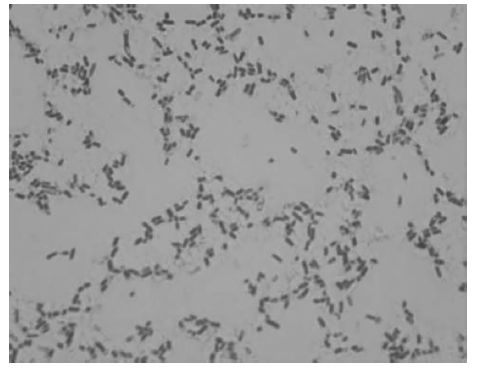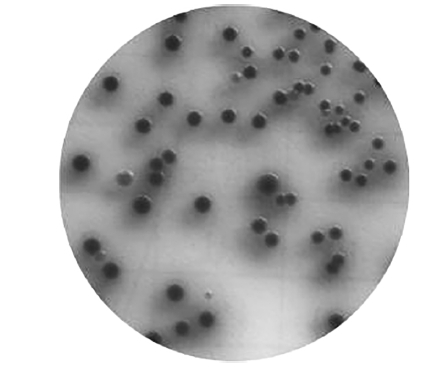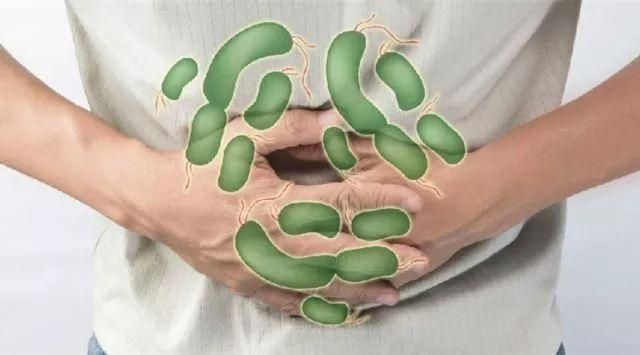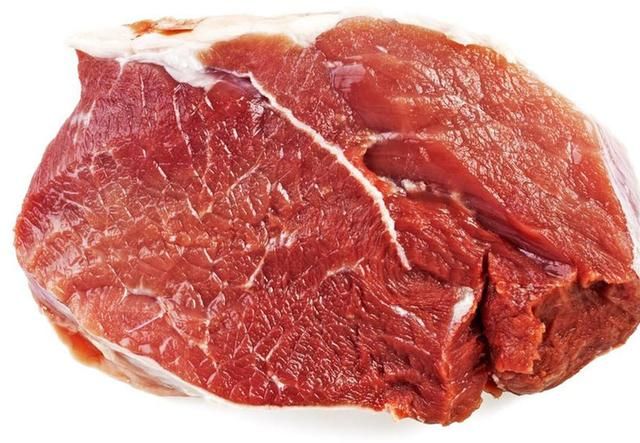Salmonella is a class of gram-negative enterobacteria in the family Enterobacteriaceae. In 1880, Eberth first discovered Salmonella typhi. In 1885, Salmon isolated Salmonella cholera in pigs. In 1988, Gartner isolated Salmonella enteritidis from patients with acute gastroenteritis. And in 1900, the class was named Salmonella.
At present, Salmonella poisoning incidents have been globally distributed and the incidence is increasing year by year.
Pathogenic characteristics
Salmonella is a Gram-negative bacterium with short rod, body size (0.6 ~ 0.9) μm × (1 ~ 3) μm, both ends bluntly rounded, which does not form pods and budding spores. With flagella, Salmonella is motile.
The bacterium does not have high requirements for nutrition, and the isolation culture often uses an intestinal selective identification medium.
In the broth, the medium becomes turbid and then precipitates in the agar medium after 24h incubation to generate smooth, slightly elevated, round, translucent gray-white small colonies. See Figures 1-1 and 1-2.
Figure 1-1 Salmonella under the microscope after Gram staining
Figure 2-3 Colony morphology of Salmonella on chromogenic medium
Epidemiological features
Salmonella is widely distributed in nature, humans and animals such as pigs, cattle, horses, sheep, chickens, ducks, geese, etc. are its hosts.
A few Salmonella have selective hosts, such as Salmonella abortus in horses, Salmonella abortus in cattle, and Salmonella abortus in sheep cause abortion in horses, cattle, and sheep respectively; Salmonella typhimurium only attacks pigs; other Salmonella does not need intermediate hosts, and are easily spread between animals and animals, animals and humans, and humans through direct or indirect routes.
The main route of transmission of Salmonella is the digestive tract, and eggs, poultry, and meat products are the main vectors of salmonellosis.
Salmonella infection in humans and animals can be asymptomatic with bacteria or can manifest as a lethal disease with clinical symptoms, which may aggravate the disease state, increase the rate of death or reduce the reproductive productivity of the animal.
The pathogenicity of Salmonella depends mainly on the type of Salmonella and the physical condition of the person consuming it. Salmonella cholera is the most pathogenic in pigs, followed by Salmonella typhimurium, and Salmonella duck is less pathogenic; the most threatened are children, the elderly, and immunodeficient individuals, and even less abundant or less pathogenic strains can still cause food poisoning and even more severe clinical symptoms.
Hazards
Salmonella is the most important zoonotic pathogen in the Enterobacteriaceae family and has the highest incidence of bacterial food poisoning.
The Centers for Disease Control and Prevention reported that Salmonella was responsible for 33 of the 84 bacterial food poisoning incidents that occurred in the United States in 1973, accounting for the highest number of food poisonings with 2,045 poisonings.
The 2018 annual report on trends and sources of zoonoses published by the European Food Safety Authority and the European Centre for Disease Prevention and Control shows that nearly 1/3 of foodborne illness outbreaks in the EU are caused by Salmonella and that salmonellosis is the second most frequently reported human gastrointestinal infection in the EU (91,857 cases reported), after campylobacteriosis (246,571 cases). Salmonella food poisoning accounts for more than 40% of bacterial food poisoning in some countries.
One of the world’s largest incidents of salmonella food poisoning occurred in 1953 when 7,717 people were poisoned and 90 died in Sweden from eating pork contaminated with S. typhimurium.
Salmonella is so terrible, and in daily life how to prevent the infection and spread it?
1.Strengthen dietary hygiene and the management of ingredients. Prevent meat, eggs, and milk from being contaminated during storage. Do not eat raw meat, fish, and eggs. Do not eat meat from sick or dead poultry or domestic animals.
2.Since flies, cockroaches and rats are intermediaries for the transmission of Salmonella. Therefore, we should do a good job of exterminating flies, rats, and cockroaches to prevent food from being contaminated.
3.Change bad eating habits and living habits to improve your immune system.
Post time: Apr-03-2023






